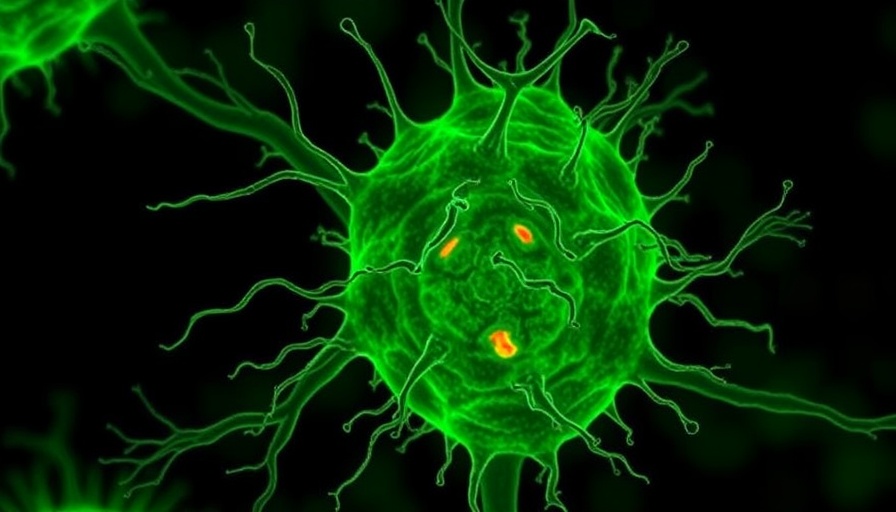
Understanding Mitochondrial Transfer: A New Avenue in Cancer Research
In a groundbreaking discovery, researchers from ETH Zurich have unveiled a dynamic mechanism by which cancer cells engage with their environment by transferring mitochondria to fibroblasts, particularly cancer-associated fibroblasts (CAFs). This transfer facilitates tumor growth, offering exciting yet concerning insights into how tumors thrive within the body. By employing tunneling nanotubes (TNTs), cancer cells effectively reach out to fibroblasts and deliver vital components that amplify their support in tumor formation.
What Mitochondrial Transfer Means for Cancer Progression
The implications of this process extend beyond mere cellular interaction. Mitochondrial transfer has been recognized as a vital factor influencing metabolic shifts in tumorigenesis. Cancer cells, utilizing the transferred mitochondria, enhance the metabolic capabilities of CAFs, allowing these supportive cells to contribute significantly to the tumor's nutrient and energy needs. This mechanism of cooperation reflects a sophisticated strategy that cancer cells employ to manipulate their microenvironment and ensure their survival.
Historical Context: Previous Research on Mitochondrial Exchange
The concept of mitochondrial transfer is not entirely new; it has been implicated in various cellular processes, including wound healing. Previous studies suggested that this exchange could bolster cell survival strategies. However, the recent work brings a new perspective by demonstrating how cancer exploits this exchange to bolster its growth by essentially co-opting surrounding tissues. This revelation may reshape our understanding of tumor biology.
The Role of MIRO2: The Key Player in Mitochondrial Transfer
At the heart of this mitochondrial exchange is a specific molecule known as MIRO2, which acts as a facilitator for the transfer process. Researchers discovered that inhibiting MIRO2 effectively disrupts the transfer of mitochondria from cancer cells to fibroblasts, suggesting that targeting this molecule could be an innovative therapeutic approach. Blocking this transfer may diminish the supportive role of fibroblasts in tumors, underlining a potential therapeutic strategy in oncology.
Future Predictions: Implications and Directions for Cancer Therapy
As research into mitochondrial transfer continues to progress, the therapeutic implications are intriguing. Targeting the communication pathways exploited by cancer cells might prove to be a revolutionary part of cancer treatment. For instance, therapies that disrupt the functionality of TNTs or inhibit MIRO2 could potentially reduce cancer cell metabolism and proliferation, offering a new route to control tumor growth and treat cancer more effectively.
Conclusion: A Call to Action for Further Research
The findings highlight the complex interactions between cancer cells and their support cells within the tumor microenvironment. Understanding these interactions not only sheds light on cancer biology but also raises the need for therapeutic strategies that consider the multifaceted nature of tumors. As advocates for health and longevity, it is crucial to stay informed about these developments and support research that may lead to innovative treatment approaches. Together, we can pave the way for more effective cancer therapies that could transform patient outcomes. Take a moment to reflect on how vital it is to stay updated on these scientific advancements that hold the potential for substantial well-being and health in the future.
 Add Row
Add Row  Add
Add 




Write A Comment